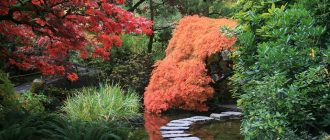Discover the origins of the Japanese Zen garden and the factors that make it strikingly different to regular gardens…
The Japanese Zen garden style has attracted world attention in recent years. Known as Karesansui in local lingo these Japanese garden designs are perhaps the most exotic and beautiful gardens known to man. The Zen garden that is gaining popularity today actually finds its roots way back in the history of Japanese culture.
Sometimes known as the Japanese rock garden they are known for their simplicity and lack of plants. Although still considered to be a garden the Zen style hardly makes use of any greenery. In fact you will find many Japanese Zen gardens to be void of any plantation at all. The very word used in Japan for this type of garden translates as dry water and mountain.
In the Japanese Zen garden the illusion of water is created by raked sand. The sand is raked in such a manner so as to suggest rippling water. The arrangement of rocks is done for them to represent islands and mountains. This conceptual form of gardening has its roots embedded in the 6th century civilization of Japan.
Famous Japanese Zen gardens
There are a number of famous Japanese Zen gardens. Amongst them is the one that contains fifteen rocks that have been artistically arranged on rippling sand. Generally a Zen garden has a specific view point from where it needs to be observed. This particular garden can however be viewed from a multiple of angles with the unique thing being that only 14 of the rocks will be visible from each angle.
Archaeologists have been able to dig up traces of rock gardens from the time of Empress Suiko which was in 592 AD. It was the early 700s when Zen Buddhism began to have a mass influence on Japanese society. The Zen garden was a creation of their monks who sought to represent the simplicity and harmony of life through this art medium.
This age old tradition has only grown in popularity over time and finds it self being sought after in our times. The good thing about these gardens is that they can be created over a very small space. Hence having a huge backyard or front lawn is not a prerequisite for you to have a Japanese Zen garden in your home.
The creation of Japanese Zen gardens can range from extremely simple to highly elaborate and extensive. For most people the rippling water and the rocks represent the geographical positioning of the country of Japan. There are others who seek deeper innate meaning in the conceptual garden of tranquility.
The popularity of Zen gardens has led many people to experiment with the art medium. Creating a Zen garden is no longer something that only a person from Japanese origin can do. Rather many people have studied and mastered the skill whilst adding their own creative tit bits as well.
The concept once started out by the Zen monks is now in high fashion. It is perhaps the simplicity and elegance of Japanese Zen gardens that have helped them to retain their appeal even till this day.





